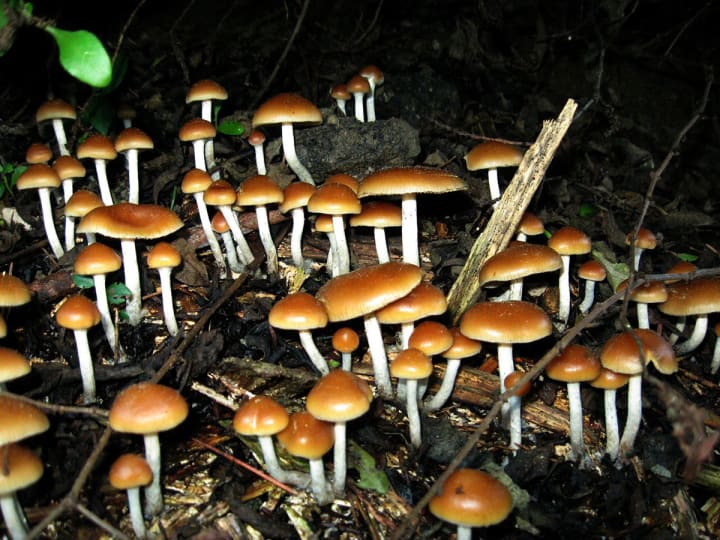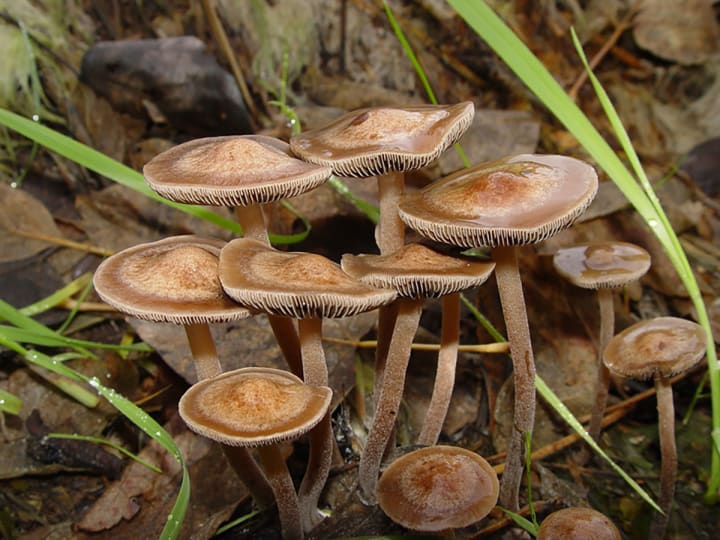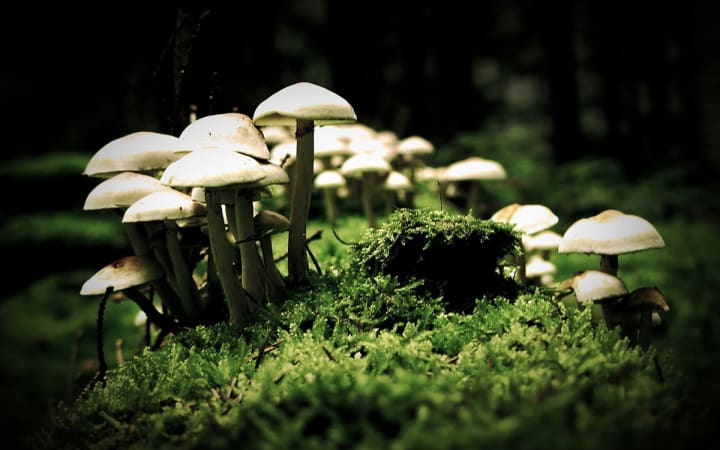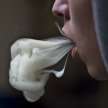Magic Mushroom Guide
Become an expert in hallucinogenic shrooms with the magic mushroom guide.
Throughout history, there has been considerable interest in magic mushrooms. Thousands of young people, spurred by the writings of Carlos Castaneda and R. Gordon Wasson, journeyed to popular collecting grounds in Mexico and South America in hopes of coming across some of these hidden treasures. Curiously, our own country was long overlooked, though lucky for us, we now know it is richly endowed with these hallucinogenic species.
From the Golden Top to the Liberty Cap, magic mushrooms can be found nearly anywhere in the world. While their psychedelic effects are craved by some, others search for them purely due to curiosity and to study their intriguing scientific features. Hallucinogenic mushrooms, more commonly known as "shrooms," have an extremely strong impact on the human body, especially when taken in volume. It is possible to have a bad "trip," slang for the feeling of being on shrooms. However, those who have successfully experienced with the drug yearn for the intense yet open outflow of thoughts that circulate through the brain while on the trip. Regardless of how you feel about the drug, this magic mushroom guide will give you all the information you need on the phenomena.
Where to Find, and How to Identify Your Magic Shrooms
Within the United States, certain geographical regions are especially suited for mushroom growth. The southeastern states do not host a remarkable diversity of hallucinogenic mushrooms, but they are well known for one species in particular. Psilocybe cubensis, commonly called the Golden Top, is a prolific dung-inhabiting mushroom found mostly in the spring to early summer. Its striking appearance, size, and fairly exclusive habitat makes identification relatively easy. This is not true of the Psilocybe genus as a whole, however; Many of the hallucinogenic species closely parallel the appearance of some of the most deadly poisonous mushrooms.
The Pacific Northwest’s climatic and ecological conditions encourage a vast array of fungi to flourish, more so than most other regions of the world. In the coastal plains situated between the Pacific and extensive Cascade Mountains, a majority of hallucinogenic species indigenous to our country can be found. Mushrooms thrive in every kind of habitat but most are inedible, some are edible, some are poisonous, and comparatively, some are outnumbered dozens of times by poisonous species alone. Whereas southeastern mushroom hunters of Psilocybe cubensis are more likely to be harmed by irate farmers, mushroom hunters in the Pacific Northwest and elsewhere are particularly susceptible to being poisoned because of simple mis-identification.

Image via Wikipedia
There are no sweeping rules for identifying all hallucinogenic mushrooms. There are, however, a few features distinctive of many of the psilocybin-containing Psilocybe and Panaeolus species, and not shared by poisonous or non-hallucinogenic fungi.
An important feature in determining whether you have a Psilocybe or Panaeolus species is spore color. The color of a mushroom's spores is frequently a basis for its classification. Spore color can vary greatly from one genus to another, but generally mushrooms of a single genus have very similarly colored spores. If a mushroom has a purplish brown to black spore print and its flesh becomes bluish to bluish green where bruised, then it is almost certainly a psilocybin-containing species. Both of these conditions must apply for this identification to be accurate, however.
Taking a spore print is very simple. Sever the cap from the stem and place the cap, gills down, on a piece of white paper. (Be sure to keep different collections separate from one another!) Place a glass lightly moistened with water over the mushroom cap to prevent rapid evaporation. In a few hours, spores will collect on the paper according to the radiating symmetry of the gills. If the mushrooms have partially dried, or have been refrigerated for an extended period of time, you probably won't get much of a spore print. If you get spores, their color should be obvious. Keep in mind, however, that the longer the cap is left on the paper, the heavier and therefore darker the spore print will be. This can be confusing if it's necessary to distinguish between subtle shades of one color. If there is no apparent print, the spores may not have fallen or they may be white—in which case take another print on colored paper. (The Amanita species, for instance, have white spores. They are not psilocybin-containing mushrooms; Several species in the genus are deadly poisonous).

Image via Wikipedia
Another very important feature distinctive of many psilocybin-containing mushrooms is the bluish or bluish green bruising reaction. This occurs when the mushroom flesh is damaged. Sometimes bluing shows in a few minutes, even seconds, while with other species it may take hours for another change in pigmentation to be seen. This bluing reaction seems to be directly related to the presence of psilocin (dephosphorylated psilocybin) and its degradation into presently unknown compounds. As a rule of thumb, the stronger the bluing reaction, the higher the original concentrations of these hallucinogens, and, conversely, the weaker the bluing reaction, the lower the concentrations. (There are exceptions to this, but generally it holds true). So, if there is distinct bluing of the cap or stem flesh when bruised and the spore prints you've taken are purplish brown to black in color, then it is highly certain you have a hallucinogenic species in the genus Psilocybe or Panaeolus.
Though this may sound simple enough, these rules have definite limitations. First of all, given just this information you can't identify anything to species. (All you would know is that it is a psilocybin containing mushroom.) And, some species containing psilocybin do not exhibit any bluing reaction upon bruising.
Psilocybe and Panaeolus are fairly close taxonomically. For the most part, one can distinguish species of Panaeolus and Psilocybe the mottled or spotted nature of the gills and, again spore color. Typically, the gills Panaeoli become mottled from the uneven ripening of spores on the gill faces. When the mushrooms are very mature, this feature often cannot be seen. All species in Panaeolus but one have distinctly black to violet-black spores while the Psilocybe species have varying shades of purplish brown.

Image via Wikipedia
Down to Business
Four species of Panaeolus will be discussed, three of them temperate species, and one semi-tropical. The Haymaker's Panaeolus, Panaeolus foenisecii, is probably one of the most common dark spored lawn-inhabiting mushrooms. It grows throughout the North American continent and is the only species of Panaeolus not to have a blackish spore deposit: its spores are a dark brown. This sometimes hallucinogenic species has some close relatives.
Panaeolus castaneifolius is very close to the Haymaker's Panaeolus, but can easily be distinguished from it by their spore colors. Both of these species share an interesting microscopic character—their spores are slightly roughened. This is highly unusual as all other species in the genus have very smooth spores. Panaeolus castaneifolius is also an inconsistently hallucinogenic mushroom.
Panaeolus subbalteatus is one of the most widespread of the consistently hallucinogenic species in this genus.
Preferring horse manure and straw composts, this mushroom usually develops a darker-colored band along the cap margin when partially dry. Sometimes the stem base, and rarely the cap, bruises bluish or bluish green. It has been found several times in and around piles of bedding taken from horse stables and infrequently elsewhere. A new species very close to Panaeolus subbalteatus is common along the coast of California, differing mostly in microscopic characteristics. It grows in cow manure and in rich pastures.
Panaeolus cyanescens is a semitropical species and potently hallucinogenic for its size. Growing in environments such as Florida, Hawaii, and possibly southern California, this dung-inhabitor gives a striking bluing reaction when bruised. Microscopically, it is distinguished by a remarkable sterile cell (called a pleurocystidium) interspersed among the spore-producing cells.

Image via Youtube
As you may have noticed, all of the Panaeoli discussed are dung- or grassland-inhabiting species. This is typical of most of the species in the genus, and many can be readily cultivated using the same techniques described in the popular literature for Psilocybe cubensis.
Psilocybe stuntizii is one of the most prolific psilocybin-containing species. It grows on wood chips in the northwest and has all the classic features so typical of the genus—a purplish brown spore deposit; a flesh that bruises (slightly) bluish green; a separable gelatinous pellicle; etc. Yet, it can be a highly dangerous mushroom for unwary amateurs to pick. Galerina autumnalis grows just as abundantly in the same habitat and is very poisonous, producing the same deadly toxins as Amanita virosa (called the Destroying Angel or the White Angel of Death). On occasion, colonies of these two species have intersected each other. This didn't seem too unusual; one often finds them growing in close proximity. But in bending down to pick a cluster, it may seem these two species grow as if from one group.
Because mushrooms are greatly affected by environmental conditions,(weather, habitat, etc.) they often exhibit a spectrum of appearances more or less centered around a single theme. The closeness between these species is indeed frightening—not so much for experienced mushroom hunters who are accustomed to species variability, but for amateurs whose enthusiasm for “getting high” outstrips their sense of caution.
The Galerina species grow across much of North America. Not all are poisonous, but most of the 199 known species have not been ingested or analyzed. Because they are small and brown, and frequent the same habitats as many psilocybes, they present a very real danger to seekers of hallucinogenic mushrooms. By taking spore prints, one can separate these species definitively. Galerina species have rust brown spores while Psilocybe mushrooms have purplish brown spores.

Image via Nature
Psilocybe pelliculosa is a common woodland species, often growing along hiking trails or at the borders of conifer woods. It is mildly hallucinogenic, doesn't always exhibit a bluing reaction and, as its name implies, has a separable pellicle. Some galerinas could be confused for this species. Psilocybe pelliculosa has essentially the same macroscopic appearance as Psilocybe silvatica, a species growing throughout the northeastern and much of the midwestern part of the country as well as in the northwest.
Of all the psilocybin-containing mushrooms growing in Pacific Northwest, Psilocybe semilanceata, commonly called the Liberty Cap, has attracted the greatest interest. This field-inhabiting species is probably the easiest of all the hallucinogenic species to recognize. It is also one of the smallest. Growing in great numbers, usually in association with tall grass, the Liberty Cap has a very unique appearance. The cap is conic-shaped and often there is a distinctive umbo or “nipple” on its top. Some specimens bruise bluish green, especially at the stem base, while others do not. Like many of the psilocybes, the cap is slimy when wet from a separable gelatinous pellicle. The stem length of this species can be quite variable, depending on ecological conditions. Liberty Caps grow mostly in the fall, to a lesser degree in the spring. It is quite potent for its small size and can be gathered in great quantities after a few days of rain and cool temperatures. Psilocybe semilanceata can be found across much of Europe and the British Isles as increasing numbers of inhabitants there are discovering each year.
There are many more species, both hallucinogenic and poisonous, that deserve mention in any article on psilocybin-containing mushrooms. The limitations, however, are obvious. As more and more people realize hallucinogenic mushrooms could be growing in their own back-yards, the necessity of instilling caution becomes even more important. If you're truly interested in mushroom identification, mycological societies can offer a wealth of guidance and information. There are a number of general mushroom field guides on the market which can help introduce amateurs to skills necessary for identification.
Clearly, finding hallucinogenic mushrooms demands patience, a willingness to learn, and a great deal of discretion. In the end, the unparalleled excitement of discovery and the ensuing union of consciousness makes it all very much worthwhile.

Image via Wikipedia
An Unusual Perspective
Traditionally, hallucinogenic mushrooms have always been discussed from historical, taxonomical, and pharmacological perspectives. We're accustomed to perceive mushrooms in proportion to our dimensions of reality, and our perceptions of the world can be very limited. Rarely does one pick a mushroom and suddenly see it in the perspective of a vast spacial continuum. Instead, we go trampling through the fields unsuspecting of the startling microworld in existence just beyond the limits of our natural vision.
The microscopic realm of mushrooms is very dynamic. Gill surfaces, initially smooth and undifferentiated, undergo a remarkable morphological transformation in the matter of only a few hours. Through a scanning electron microscope, the gills seem to be immense plains stretching from horizon to horizon, rapidly being populated with cells emerging from the underlying tissue. By the time the mushrooms are mature, millions of spores litter the gill surfaces, obscuring even the cells that produced them, the basidia. These spores are literally jettisoned into space by micro-explosions at the spore basidium conjunction. Once into the atmosphere, the spores are carried to fresh habitats by the slightest of winds.
Looking closely at the gill margin of a Psilocybe or Panaeolus you can see a thin whitish “fringe.” This is caused by marginal cells (called cheilocystidia) forming a sterile band along the margin. The spore-producing cells, basidia, grow in the interior regions of the gill. Typically, four spores grow from each of these cells. The spores germinate and then mate, creating a complex web-like growth known as mycelium.
The mycelium is the true plant, and the mushrooms are its fruit. At some point in time, the mycelium forms “pinheads” or primordia, first appearing as small white dots. These in turn grow into mushrooms, and the life cycle has come full circle.
If you're not ready to take the plunge into magic mushrooms just yet, fear not. While hallucinogenic mushrooms are effective for enhancing mental and spiritual wellbeing, nutritional mushrooms are excellent for improving your physical health. Organic Mushrooms can strengthen immune support and promote healthy heart and liver function. So take your pic. As long as you're eating mushrooms, we're happy.
About the Creator
Potent Staff
A serious group of marijuana connoisseurs always giving back to the community. Peace.





Comments
There are no comments for this story
Be the first to respond and start the conversation.